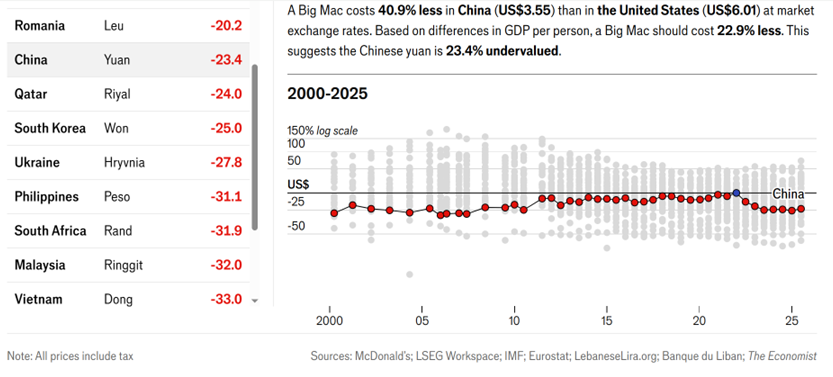My title for Setser-Sobel in OMFIF, more soberly entitled “It’s time for China to let the renminbi appreciate sharply”:
The renminbi is hugely undervalued. This is an impediment to tackling China’s enormous current account surplus and the leadership’s stated desire of boosting domestic demand. Instead of managing the currency tightly against the dollar, it is high time for the authorities to promote strong appreciation against the dollar and on a trade-weighted basis.
Gauging undervaluation
Prominent currency valuation models are based on current account positions. This summer, the International Monetary Fund’s External Sector Report noted China’s 2024 cyclically adjusted current account surplus was 2.0% of gross domestic product, exceeding its norm by 1.2 percentage points of GDP. On that basis, the Fund estimated renminbi undervaluation at 8.5%.
In the Fund’s October World Economic Outlook report, however, China’s 2025 current account surplus was revised up to 3.3% of GDP. Applying the Fund’s elasticity estimate, that would suggest an undervaluation of around 18%, assuming the estimate is broadly in line with the cyclically adjusted surplus.
The IMF’s current account estimates are based on Chinese balance-of-payments data, which started to diverge significantly from China’s customs trade data after China changed its BoP methodology in 2022. If one uses customs data (based on the previous methodology), then the current account surplus increases significantly.
Further, assuming China’s income balance is flat, notwithstanding the large and rising net international investment surplus (thus discounting the increased income deficit China has reported since the pandemic), the current account surplus could be in the order of 5% of GDP. Applying the Fund’s elasticity estimate yields an undervaluation of roughly 30%.
Here’s Figure 2 from their article:
Interestingly, this is lower than the 23.4% implied (for July) by Big Mac Parity.
An evaluation using the Penn effect (as in Cheung, Chinn, Nong, 2017) would likely yield similar results.
While this estimated undervaluation is smaller than the 30% or so in May 2006, China is a much larger economy now, accounting for a much larger share of world GDP.
In other words, yuan undervaluation is helping to sustain Chinese GDP growth, but at the expense of aggregate demand in the rest of the world (in particular Europe).
“

